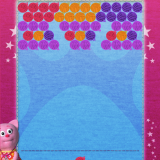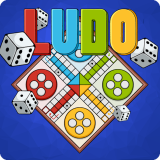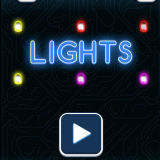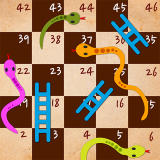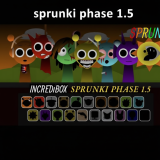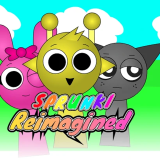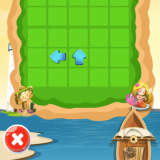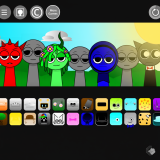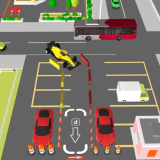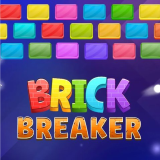In the digital era, gaming has become almost second nature to childhood. Far from the conventional picture of children hooked to screens in solitude, the gaming scene of today presents many chances for education, social growth, and family togetherness. Regularly writing about digital entertainment for families, I'm eager to provide some interesting gaming activities that strike a mix of enjoyment and developmental value.
Getting the Correct Balance
First, let us discuss screen time the elephant in the room. Many parents are concerned about their kids gaming excessively. Curating and balancing are the keys here. Rather than concentrating just on the amount of screen time, the American Academy of Pediatrics advises parents to give the quality of the content top priority and make sure it doesn't replace physical activity, sleep, or other vital pursuits.
Given this, let's look at game choices that really have value for kids.
Family Bonding Cooperative Console Games
One does not have to engage in console gaming alone. Many excellent games engage the whole family and encourage communication and teamwork:
Still a perennial favorite, Minecraft lets children construct, explore, and work through challenges together. Although it still tests younger children's spatial reasoning and planning ability, the creative mode eliminates fighting components, thus fitting them.
For family gaming especially, Nintendo's products shine especially brilliantly. For younger players, games like "Mario Kart 8 Deluxe" have adjustable difficulty options, including steering and acceleration aid. In a pressure-free setting, "Animal Crossing: New Horizons" promotes social skills, resource management, and inventiveness.
Overcooked 2 shows family members working under duress to run a disorderly kitchen how to cooperate. The game calls for communication, coordination, and fast thinking qualities that apply nicely in the real world.
Educational Activities Different from Homework
The finest educational games present learning as an enjoyable activity for kids that develops important skills:
Through the design of their own games, Roblox Game Creator lets children understand fundamental programming ideas. This platform has become a strong creative tool where kids may express themselves and grow in logical thinking ability.
Through equation solving, Prodigy Math Game transforms mathematical practice into a spectacular journey where players travel across an immersive environment. Many classrooms have included it with conventional arithmetic lessons.
As older children develop and launch spacecraft, Kerbal Space Program exposes them to physics and engineering ideas. The trial-and-error method imparts scientific reasoning and resilience.
Active Gaming to Get Kids Moving
Gaming doesn't have to mean sitting motionless. Sometimes referred to as "exergames," active video games entice youngsters off the couch: The Just Dance series transforms living rooms into dance floors with choreography appropriate for many ages and skill levels. This is a great approach to include exercise in gaming sessions.
With a flexible ring controller measuring bodily motions, Nintendo Ring Fit Adventure turns a workout into an adventure game. Through drills including squats, yoga positions, and jogging in place, players overcome opponents.
With virtual lightsabers, Beat Saber for VR systems combines music rhythm games with real movement as users slice through incoming blocks. It gives a reasonable workout and helps coordination.
Unplugged Gaming | The Digital Detox
Sometimes the best gaming experiences call for very little electricity at all:
There is a rebirth in board games since choices go much beyond Monopoly and Scrabble. Cooperative games like "Forbidden Island," "Ticket to Ride," and "Catan Junior" teach social skills and strategic thinking.
Excellent developmental advantages abound from tabletop role-playing games. Kids' simplified versions of Dungeons & Dragons promote all at once storytelling, mathematical thinking, social negotiation, and problem-solving.
Portable entertainment that develops numerical awareness and strategic thinking comes from classic card games like Uno as well as contemporary choices like Exploding Kittens.
Designing a Gaming Environment in Health
Just as much as the substance, the context of gaming counts. These ideas help to promote a good gaming culture at home:
When you can, play together. This lets you steer experiences and spark discussions via games.
Specify exactly when gaming is appropriate. Standard guidelines help to avoid conflicts.
To safeguard physical health, arrange a comfortable space including appropriate lighting, ergonomic chairs, and frequent break reminders.
Talk about the material you come across in games to assist kids in sorting fiction from reality and processing themes.
Honor gaming successes as you would those of sports or intellectual prowess.
Gaming Skills as Future Valuable Assets
Though studies indicate otherwise, many parents worry gaming is only "wasting time." The abilities gained via careful gaming fit rather nicely with the demands of the future workplace:
Analyzing problems and applying critical thinking
Digital literacy and technology comfort
Resource handling and strategic planning
Cooperation and dialogue
Tenacity across obstacles
Imaginative expression
Many scientists, engineers, and computer experts credit early gaming experiences with igniting their career passions.
Outdoor Activities | Fun Soccer Games for Kids
While digital gaming offers many benefits, incorporating fun soccer games for kids into their routine provides excellent physical exercise and social development. These fun soccer games for kids can be played in backyards, parks, or any open space, making them accessible options for families looking to balance screen time with outdoor activities.
Frequently Asked Questions
For what age group would one consider reasonable gaming time?
Think of a balanced approach instead of rigorous time restrictions. For elementary school students, many families find that 30 to 60 minutes on school days and maybe two hours on weekends fit their schedule. While teens may manage longer sessions, gaming should never replace sleep, exercise, homework, or socializing. Your choices should consider the caliber of the games as well as their social or instructional nature.
Which warning signals indicate that gaming is starting to cause problems?
Look for behavioral changes that include irritability when unable to engage in previously liked hobbies, falling grades, altered sleep patterns, and gaming to escape issues rather than for enjoyment. See a professional if gaming regularly creates problems or if your child is unable to regulate their playing time.
How well should younger children (ages 4–7) be exposed to gaming?
Starting with easy, age-appropriate tablet games that use play to teach fundamental ideas, excellent starting places are PBS Kids games, instructional programs like Khan Academy Kids, or condensed forms of beloved works like Minecraft's creative mode. First, always preview games; then, play with your child to help them navigate their experience.
How can I ensure my children's safety as they engage in online multiplayer gaming play?
Learn about parental controls available on every gaming system. Talk often about online safety, stressing never to share personal information. Turn off chat tools or limit younger kids to approved friends. Ask inquiries about their online experiences to remain involved and keep gaming gadgets in shared spaces instead of bedrooms.
Do games exist especially for kids with special needs?
Certainly! In terms of accessibility, the gaming sector has come far. Children that struggle with concentration should think about shorter play times for games like "Snipperclips" or "Untitled Goose Game." Look at adaptable controllers and games with adjustable difficulty settings for people having motor skill difficulties. Many instructional games also provide limited sensory stimulation choices with varying tempo.
- First important point about the content
- Second point with detailed explanation
- Another noteworthy detail
- Final concluding thought



